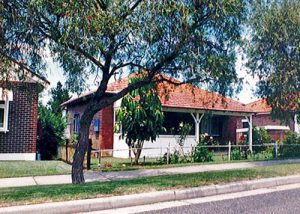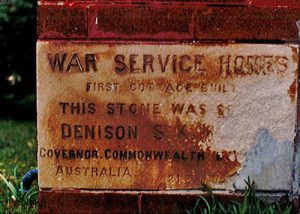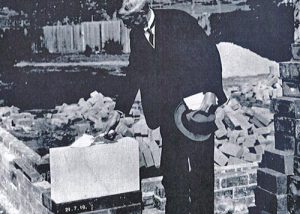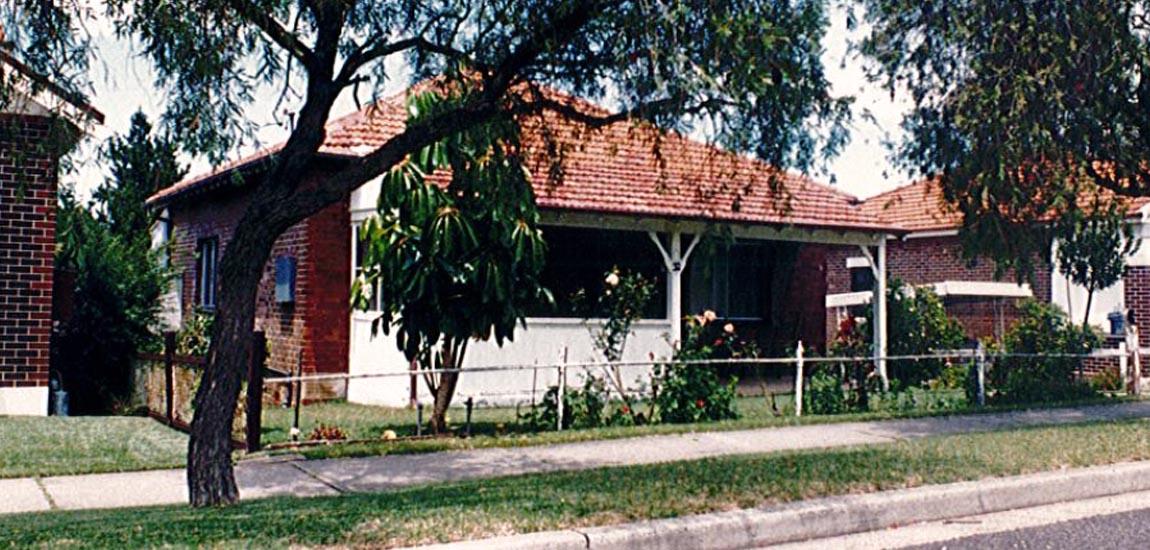The unveiling of nameplates to commemorate World War I streetnames took place on 11 November 2001 (Remembrance Day) at 11.00am in a ceremony conducted by the Belfield RSL. Four name-plates were unveiled at Persic, Bazentin and Mena Streets, and Birdwood Avenue.
In their research about the origins of these street names, local historians Brian Madden and Lesley Muir found that three of these Belfield streets were named by the War Service Homes Commission. They are Persic, Bazentin and Mena Streets. The Commission was established to provide houses for servicemen returned from World War I. Some of these streets had been subdivided before as part of the Great Central Railway Estate in Belmore (now Belfield), but were not settled, and were acquired and re-subdivided by the Commission in 1920.
Bazentin Street, Belfield
Bazentin Street was originally named Wattle Street but was re-named by the War Service Homes Commission. The Commission acquired a large part of the Great Central Railway Estate in Belmore (now Belfield) in 1920. Bazentin is a village in the Somme Valley battlefield in France, where Australian troops fought in World War I. It was liberated by British troops from German hands in 1916. Bazentin-le-Petit Military Cemetery has a number of Australians buried there, who were killed in the nearby Battle of Stormy Trench.
Birdwood Avenue, Belfield
Birdwood Avenue was not named by the Commission and was probably named after General Sir William Birdwood, who commanded the Anzac Corps through most of World War I. He was considered one of the best generals of his day and was popular with the Australian troops.
Mena Street, Belfield
Mena Street was named by the War Service Homes Commission after the site of an Australian Army training camp and military hospital in Egypt in World War I. For reasons we do not know, Mena Street became known as Messines Street for many years until the 1960s. The Battle of Messines took place near the village of Messines in Belgium in 1917. Australian troops took part in the battle, and a number of former Canterbury residents were killed there.
Persic Street, Belfield
The War Service Homes Commission named Persic Street after the ship “The Persic” that transported Australian troops to the European battlefields in World War I.
 Soldiers on board the troopship HMAT Persic (A34), with paper streamers joining them to the crowd on the wharf. |
 32 Kennedy Ave Belmore: the first War Service Home in Australia built in 1919. Photo taken in 1990. |
 Foundation stone on front corner, ground level. |
 1919: Mr (later Sir) Denison Miller, Governor of the Commonwealth Bank, laying the foundation stone at 32 Kennedy Ave Belmore—the first War Service Home built in Australia. 1919: Mr (later Sir) Denison Miller, Governor of the Commonwealth Bank, laying the foundation stone at 32 Kennedy Ave Belmore—the first War Service Home built in Australia. |



